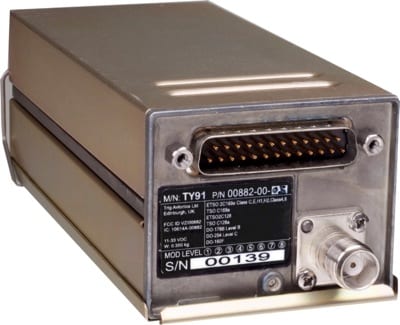PS Engineering has introduced a certified, full-featured VHF com radio integrated with an audio control panel.
The PAR200 system combines an audio control panel, high fidelity four-place stereo intercom with IntelliVox, Bluetooth connectivity, and a remote mounted EASA/FAA Certified Trig Avionics VHF aviation communications transceiver.
“Ever since we introduced the PAR100EX Experimental Aircraft Audio Selector Panel with a remote VHF com radio, pilots have been asking us, “When are you going to get it certified?” said company founder Mark Scheuer. “The hurdle for us was not the certification of an audio panel but was to team with a company that could deliver not only a certified remote mounted radio, but build it with the highest degree of precision.”
“Since becoming an amateur radio operator in 1972, I’ve learned to appreciate the considerable challenges that must be overcome to design and build a radio that must meet stringent certification requirements,” he continued. “Teaming with Trig Avionics was a perfect solution to our radio requirements.”
 Scheuer noted that PS Engineering is “always looking for ways to help lower the cost of flying, especially when it comes to outfitting the panel of an aircraft. Partnering with the radio experts at Trig Avionics made integrating an important piece of avionics, with an advanced audio panel system, possible.”
Scheuer noted that PS Engineering is “always looking for ways to help lower the cost of flying, especially when it comes to outfitting the panel of an aircraft. Partnering with the radio experts at Trig Avionics made integrating an important piece of avionics, with an advanced audio panel system, possible.”
“Trig Avionics is excited about partnering with PS Engineering,” said Trig Avionics’ President, Andy Davis. “We are looking forward to getting into more airplanes with the PAR200, and the combination of our expertise will change the way certified four-place aircraft and LSA aircraft avionics panels will be created.”
According to the Principle Design Engineer Craig Lewis, “Seamless integration between the audio panel and the radio was the primary goal in this integration, for the best user experience possible, with minimal panel space. The KISS principle was practiced all during the development of the audio panel.”
The right half of the PAR200 is dedicated to the com radio, with an easy to read LCD display that shows both Active and Standby frequencies, along with information such as the Monitor functions activity.
Additionally, the system architecture assures that if the audio panel should have power disrupted, the display on the audio panel will remain active and allow control of the radio.
The left half has all of the audio panel controls for audio selection, intercom and music volume, intercom mode, and PS Engineering’s multiple music mute mode control. The PAR200 employs PS Engineering’s IntelliVox, a field proven automatic VOX circuit. Introduced in 1997, there are almost 30,000 systems in the field, according to company officials.
The PAR200 can be configured as stand alone audio panel/intercom/radio or can be connected to a second radio, typically with navigating capabilities.
The integrated Bluetooth system allows the PAR200 to interface with cellular telephones, giving the aircraft occupants ready access to their telephones. In addition, the Bluetooth will stream music from compatible devices like iPads and smartphones.
The list price of the PAR200, including the VHF com radio, is $2,995, and deliveries will start in the third quarter of 2013.
For more information: PS-Engineering.com or Trig-Avionics.com

They say they are “always looking for ways to help lower the cost of flying”. So, the result is $3000 for an AM RADIO and an audio switch. C’mon.
Hi Ted, I think the math adds up to show that there is a significant (23-26%) cost savings with the PAR200
Comparing the List Price of the PAR200 $2995 with individual certified components
Audio Panel with Bluetooth List Price $2095 (PMA8000BT)
Certified Radio $1795 (Garmin GTR255)
Total $3890
Savings of $895 or 23% savings
Comparing Minimum Advertised Price of the PAR200 $2595
Audio Panel with Bluetooth List Price $1795 (PMA8000BT)
Certified Radio $1745 (Garmin GTR255)
while the above MAP combination is $3540
Savings of $945 or 26% savings
Why did they have to put their audio panel XMT buttons at the bottom? All other audio panels I have ever seen had XMT buttons either on top or on the left i.e. they are the first in the “flow”. Then there is a strange volume and frequency flip-flop control on the right. Small details for sure but if they would have been done like it is in the most radios then this would be great replacement radio. Now it is like most of stuff… kind of OK, but has some unnecessary differences.
Hi Tim, just a quick note to let you know all new audio panel designs since 1998 have transmit select as the bottom row of push buttons. Even the KMA24 used the button push buttons for transmit selector). Virtually all the radios that I have used, including the GNS430, uses a concentric knob where the large knob is to select MHz and the small knob is for KHz. So in fact we used conventional tuning and audio panel selection.
Mark